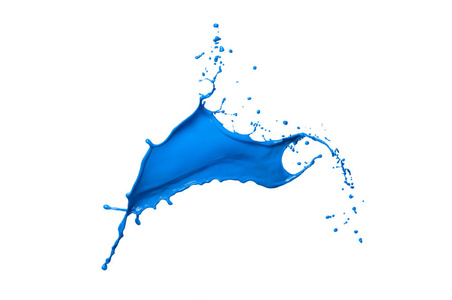How noble is the blue pigment dye? Blue is so rare
Have you ever wondered how much blue really costs? Why is this color treasured in both ancient and modern times? Today we will uncover the mystery of the blue pigment dye.
Blue is not very common in nature, and this is seen everywhere in our daily life. From the sky to the ocean, blue seems to be everywhere, but these phenomena are the result of the interaction between light and the atmosphere or water body, not the original blue matter. In plants and animals, naturally occurring blue pigments are extremely rare, so blue dyes and pigments have been particularly valuable since ancient times.



In ancient times, the Egyptians were one of the first civilizations to master the technology of making blue dyes, using a copper calcium silicate complex called "Egyptian blue." However, the manufacture of this pigment was complex and expensive, making blue a symbol of wealth and power. In medieval Europe, only the royal family and nobility could afford the extremely valuable "Afghan lapis lazuli", also known as "blue gold", imported from the Middle East. This pigment is used in crafts and paintings, and its high price even exceeds that of gold.
Although modern technology has brought us synthetic blue dyes, blue still retains its special status. One of the most famous examples is Brilliant Blue FCF, a food coloring used in a wide range of foods and beverages, but its extraction and synthesis still require highly elaborate chemical processes. At the same time, the modern industry is also constantly exploring more durable and stable blue pigments, such as YInMn blue, this new pigment is not only bright color, but also has excellent durability and environmental protection.
In response to the popular misconception that the high price of blue is just commercial hype, in fact, from a scientific and historical perspective, the cost of blue does involve complex technology and rare resources. It turns out that, both then and now, making a stable and beautiful blue color requires quite a bit of research and investment.
If you want to have your own blue experience, here are some practical tips to try: First, learn about the different blue products on the market and the materials they are made of, which will help you choose products that are more environmentally friendly and long-lasting. Secondly, pay attention to the new trend of blue in fashion, art and design, blue is not only a color, but also a reflection of lifestyle and taste. Finally, by trying to DIY some simple blue dye production, you can not only feel the fun, but also further understand the precious place of this color.
Blue is more than just a color; it represents a rare element of the natural world and a human search for beauty and permanence. Whether it is the emperors and nobles in the past, or we today, the love and pursuit of blue has never changed. And the science and history behind it makes the color all the more touching.













